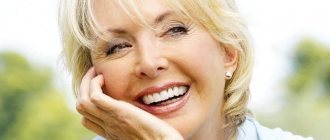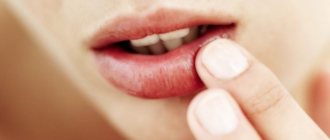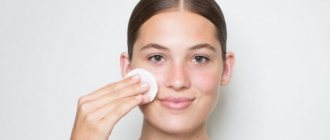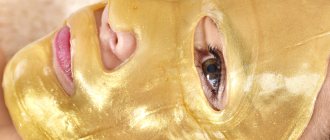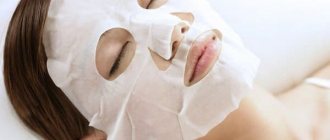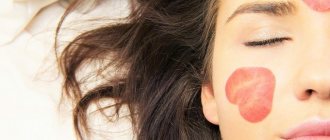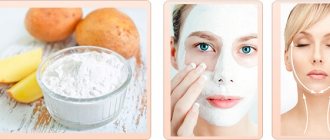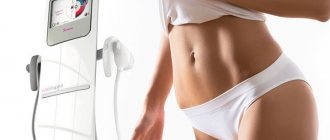Cosmetics classes
Today, cosmetics are usually divided into the following classes:
- mass market;
- middle market;
- lux.
The determining factor in such a system is the price and popularity of the brand.
The phrase mass market is understandable on an intuitive level; such cosmetics are also called “mass” and include products that are inexpensive and accessible to the majority.
When we hear the definition of “luxury”, we associate it with something expensive and luxurious, “professional cosmetics” with efficiency.
Luxury class
Luxury products include expensive products from well-known brands with a worldwide reputation. The list of brands is not very wide: Shiseido, Clarins, Christian Dior, Helena Rubinstein, Guerlain, Chanel, Nina Ricci, Elizabeth Arden, Clinique, Estee Lauder.
Such products meet quality standards, but their price is very high for other reasons. It includes packaging that is specially designed by famous designers plus the brand name. When you buy Lancome or Yves Saint Laurent products, you are experiencing high fashion and luxury.
If you are thinking whether it is possible to find effective cosmetics among more inexpensive brands, then yes - these are products of the middle price segment or middle market class. The word "average" here does not refer to quality, but to the price, which is less than luxury only due to the lack of a big name.
Mass market
Funds belonging to this category are also called “massive”. It contains the largest number of brands. In turn, the class is divided into high, medium and low mass market. Often products from the high segment are also classified as “middle market”.
We also periodically hear about premium products. But if you put several marketers side by side and ask them to name specific brands, you will hear completely different answers. Some will name IsaDora or L'Oreal, and some will name Lancome. The reason for this disagreement is the term “premium” itself, which is translated from English as “higher grade” or “higher price”. This explains why Lancome luxury products, as well as L'Oreal, which are higher than other mass brands, are included in this category. Many experts are inclined to believe that the premium class is the middle market.
Professional cosmetics
It stands apart on the general scale. Here all experts agree on its definition. Such products are used only by qualified cosmetologists and dermatologists. They cannot be sold in retail stores. You can find such products only in beauty salons and aesthetic medicine clinics. An example of real professional cosmetics are mesotherapy preparations administered subcutaneously, as well as acids used for peeling. If a person without special education uses such a solution, he will most likely receive a chemical burn. Even harmless drugs in high concentrations are dangerous.
Professional products can be compared to prescription drugs, which are prescribed only after consultation with a doctor and used under his supervision. The cosmetologist, acting as such a doctor, decides which drug to choose, in what dose to use and for how long to use. Another difference between such products is the high concentration of active substances in their composition; they can cause significant harm if used incorrectly.
But there is also an excellent interpretation of this class; it includes retail lines of products from professional brands that are accessible to anyone. The amount of active substances in their composition does not exceed that contained in products of the middle or luxury classes. From which it follows that their effectiveness is also no higher.
But there is another type of pseudo-professional line, when unscrupulous mass-market manufacturers write “professional cosmetics” on the packaging. This is the easiest proven way to build trust in your products, as such a designation is associated with quality.
What class are Faberlic products?
Marketers classify Faberlic products as middle-market products, but in terms of composition and effectiveness they correspond to the “luxury” level.
Employees of our own Scientific Center constantly monitor innovative developments about the biology of the skin, carried out in all the world's largest laboratories. They purchase the newest and most effective high-tech ingredients.
Faberlic has a patent for the use of perfluorocarbons - the oxygen complex NOVAftem-O2, which enhances the effect of any cosmetic ingredients.
The price of the Company’s goods remains in the middle segment due to a conscious decision of management, as well as its own production in Russia.
LiveInternetLiveInternet
This article presents facts from the book of dermatologist-cosmetologist S. Belovskaya, as well as studies of the composition of cosmetic products by V.I. and O. Perov. To prevent your skin from becoming a testing ground for the next experiments of cosmetic industry businessmen, you must know the following: what class (according to the international classification) the cosmetics you decide to purchase belong to.
1) Mass market Oriflame, Faberlic, Avon, Nivea, Eveline, Lumene, Ruby Rose, Herbina, Belinda, Black Pearl, Pure Line, One Hundred Beauty Recipes, etc. a) Main components. Contrary to advertising that cosmetics of this class contain exclusively natural substances, they are based on petrochemical products, which, to put it mildly, negatively affect our skin. b) Long shelf life . This period is due to the presence in its composition of heavy, toxic preservatives, formaldehyde derivatives (nipazole and paraform). c) Massive advertising. The beautiful Reese Witherspoon flashes on the screen in literally every advertising block. For a Hollywood star to agree to advertise something, how much money should she be offered as a fee? By the way, about 70% of the finances invested in the “creation” of these cosmetics are spent on advertising (therefore, as a result, there is nothing to introduce modern technologies and nothing to buy natural raw materials with). d) Beautiful and catchy packaging . 20% of the funds are spent on it. The main thing is that it is beautiful, right? d) A frequent provocateur of various skin defects and diseases , such as dermatitis, swelling, ulcers, hypo- and hyperpigmentation, seborrhea and many others, since it is very toxic. This was especially true for those with sensitive and not entirely healthy skin. f) Due to its toxicity, it is dangerous for damage to the liver, kidneys, mucous membranes, osteoarticular system, cardiovascular system, and central nervous system. Not immediately, of course, over time. g) Moderate price. A big plus for our market. However, are our health and beauty worth such savings? "Gag". For a long time I couldn’t wrap my head around the following: how can a cream for 35 rubles consist of only natural substances, when the use of natural extracts and preservatives in production is oh so expensive? Are companies involved in charity? How can you recognize cosmetics that can cause damage to beauty and health due to the harmful components they contain? There is NO COMPLETE LIST OF COMPONENTS in cosmetic products in the advertising brochures and on the websites of these companies. THE PRESERVATIVES included in this cosmetics are NOT INDICATED. Only ACTIVE INGREDIENTS are listed. VEILED FORMULATIONS are used, for example, “soft detergent components”, etc. You can find the full composition only on the packaging of the cosmetic product, since this is required by the laws of the Russian Federation. This is a reason to be wary! Companies that produce natural and truly harmless cosmetics are not afraid to indicate the full composition even in advertising brochures and on their websites.
2) Middle market Revlon, L'Oreal, Garnier, Mary Kay, Pupa, Borjois, Decleor, hormonal cosmetics, Yves Rocher Yves Rocher), Lancome (Lancome), etc. a) Main components. Such cosmetics contain from 30 to 60% herbal ingredients, which undoubtedly makes cosmetics of this class higher quality and less dangerous. However, its main components are still petrochemical products. The composition of such cosmetics includes: Deionized water, witch hazel, methylparaben, benzoic acid, carbomer, sodium hydroxide, medicinal plant extracts. b) Effect of application. Only “aesthetic” (with regular use). Those qualitative changes in the structure of the skin that are promised in advertising and colorful booklets are impossible: completely different formulas and other technologies are required. c) It is recommended to use only one line of cosmetics , otherwise a conflict of ingredients is possible, which can lead to allergic reactions and other skin defects. d) It is addictive if you use this cosmetics for more than 6 months . If canceled, unpleasant consequences are possible (sharp aging, skin defects). 3) Lux Elizabeth Arden, Yves Saint Laurent, Nina Ricci, Chanel, Estee Lauder, Clinique, Helena Rubination , Givenchy (Givenchy), Christian Dior (Christian Dior), Christian Lacrois (Christian Lacroix) and other high fashion houses. a) Main components. 70-80% natural plant extracts, the natural composition of the plant’s biocomponents is completely preserved. b) Interactive enzyme technologies are used in production , whereby these cosmetics can significantly improve the appearance of the skin and solve a number of aesthetic problems. c) Has a high% hypoallergenicity , no addiction (dependence). d) High price. e) Originals are produced in small batches. Most of our stores sell cosmetics from these companies, manufactured under license (most often in Poland). Naturally, this option for producing cosmetics can no longer be classified as LUX.
4) Cosmetics for professionals Salon cosmetics: Academy, Gadeno, Lacrima, Jassen, GG, etc. Cosmetics used in salons by a cosmetologist, for which the main thing is that you remain her client for a long time, and preferably forever. a) Main components: heavy, fast-acting pharmaceutical components, which make it possible to get a quick but short-term effect (for example, in the evening in a restaurant or theater you need to look your best). b) Cosmetics in this category have an addictive effect, i.e. When discontinued, the skin ages quickly, and skin problems that did not exist before may appear. 5) Cosmeceuticals are conventionally divided into cosmeceuticals of levels I, II and III. Depending on the level, it works in different layers of the skin: epidermis (outer), dermis and hypodermis. Level I cosmeceuticals (arisen on the basis of cosmetology and pharmacology; always a product of the pharmaceutical industry). Cosmetics from the pharmacy: Vichy, Phyto, Lierac, Uriage, Phytopharm, Pharmcosmetic, Solar, Green line, as well as skin and hair care cosmetics from the Infinum holding, Mirra Lux, Fleur de Sante. a) Main components: pharmaceutical components obtained as a result of the application of the latest achievements of the pharmaceutical industry; Contains virtually no high quality natural ingredients. b) Works exclusively in the upper layers of the skin - the epidermis; Due to their high molecular weight (more than 5000 units), substances are not able to overcome the basement membrane and penetrate the dermis. c) Possible results: elimination of dry skin - no more than 9% (stable result); elimination of oily skin - 24%; elimination of small wrinkles and smoothing out deep wrinkles - no more than 35%. Cosmeceuticals of levels II and III have a therapeutic and healing effect on the skin. These areas of cosmeceuticals arose on the basis of cosmetology and nutrition, the science of nutrition of cells and tissues of the human body. Level II cosmeceuticals This type of cosmeceuticals works at the epidermis and dermis at the cellular level. Natria (Nature's Sunshine Products), Artistry* (Amway), Dermajetics (Herbalife/Shape Works), cosmetic lines from Neways, Vision. * - Amway cosmetics are able to work at the level of the dermis and have a slight healing effect on the skin, however, due to the content of substances such as propylene glycol, lauryl/laureth sulfates, they cannot be considered completely safe. We classify it as level II cosmeceuticals conditionally, since cosmetics of this class should not contain such harmful substances. A brief description of the features of II cosmeceuticals using the example of Natria cosmetics from Nature's Sunshine Products, Inc. Cosmeceuticals of this kind work at the cellular level and are able to have a restorative effect on biochemical processes in the skin, giving a long-lasting healing effect. Works in 5 layers of the epidermis and 2 layers of the dermis to the hypodermis. a) Recommended both for problem-free skin in order to preserve youth and beauty, and for unhealthy and problematic skin. Natria cosmetics are used by dermatologists in the complex treatment of dermatological diseases (acne (acne), neurodermatitis, psoriasis, dermatitis, rosacea, infectious skin lesions, etc.) They differ from traditional medicinal cosmetics in the absence of potent synthetic pharmaceutical components that are addictive. The healing and healing power is contained in specially developed compositions of medicinal plants. b) The highest hypoallergenic formula is 98%, so the cosmetics are recommended for allergy sufferers. Does not contain toxic or hazardous substances. c) Cosmetics do not produce the effect of rapid aging or deterioration of the skin condition upon abrupt withdrawal, i.e. there is no addictive effect. d) The achieved result after using and discontinuing Natria cosmetics is observed for quite a long time. e) Natria cosmetics are not tested on animals, but only on human volunteers. In addition to the ethical issue, this is another proof of the safety of the composition of this cosmetic line. Level III cosmeceuticals a) Works in the epidermis, dermis, hypodermis at the molecular level. b) It has all the qualities and advantages of level II cosmeceuticals, but is capable of a more effective and deeper effect on the layers of the skin. c) High cost. d) Ongoing clinical trials. For normal skin care, level II cosmeceuticals are sufficient, since most skin problems are rooted in the dermis.
Source: www.fz-info.com/index.php/-natures-sunshine
Does the quality of cosmetics depend on its price?
Some buyers focus only on cosmetic classes. They are sure that the higher the price of goods, the better and more effective they are. Once upon a time this may have been the case. Now relying on cost, brand popularity and country of origin is not justified. Just as you shouldn’t think that a very cheap cream contains expensive high-tech components.
Many Russian companies have already reached high levels of production. They purchase expensive, high-quality raw materials from the same suppliers from whom they purchase famous Western brands. Therefore, both expensive imported cosmetics and Russian ones contain components of the same level.
But where does such a strong discrepancy in prices come from? In addition to the recipe, the cost is affected by packaging and the age of the brand. When assessing the quality and effectiveness of cosmetics, price is far from the main criterion. Not only Western manufacturers possess innovative technologies; Russian scientists also create their own innovations. For example, Faberlic oxygen cosmetics have no analogues in the world; its effectiveness has been confirmed by scientific institutes in different countries.
The conclusion suggests itself, the statement “more expensive means better” is no longer relevant, the price criterion does not reflect the quality and effectiveness of cosmetics. Choose based on your skin's needs and don't pay for brands and packaging. And classes are just labels pasted on by manufacturers.
What is cosmeceuticals?
Cosmetologist at the Aging Control aesthetic medicine clinic Taisiya Petrova explains that the term “cosmeceuticals” appeared in 1962 in the USA, when the Food and Drug Administration decided that cosmetics cannot be both care and medicine: “Cosmeceuticals are professional cosmetics.” , which has an aesthetic and healing effect on the skin. The term itself comes from the merger of two words – cosmetics and pharmaceuticals.”
Since then, the industry has made huge strides forward, numerous research and discoveries have led to the market expanding, new categories of products and new niches have emerged. That is why Anna Dycheva, an international expert in the field of marketing cosmetics and perfumes and General Director of Reed Exhibitions, considers the term “cosmeceuticals” somewhat outdated: “Cosmeceuticals have no official legal definition either in Russia or in the USA. In the 80-90s, it included products with a high content of active substances: more than in ordinary cosmetics, but less than in medicinal ones. There is no separate certification for such products, which means there are no clear rules of the game. It is clear that there are pharmacy brands, there are medicinal cosmetics, which are in a separate legal field, there are professional brands (like Biologique Recherche), with which specialists mainly work, and there are cosmeceuticals, which stand somewhat apart, but do not have their own legal force "
Taisiya agrees with this: “There is no such term in the legislation (as well as “pharmacy cosmetics”, “dermatocosmetics”, “medicinal cosmetics”), therefore from a legal point of view, cosmeceuticals and mass market are equal. But it’s no secret that cosmeceutical products are presented in aesthetic medicine clinics and can only be recommended by a cosmetologist.”
Representatives of brands that call themselves cosmeceuticals also have something to say about this. Ultraceuticals brand manager in Russia Maria Chibisova explains that the key difference between cosmeceuticals and conventional cosmetics is the active ingredients, there are more of them than in conventional skin care cosmetics, but less than in pharmaceutical preparations: “No matter how well the administrator of a salon or clinic knows knowledge about brand products, products with active ingredients can only be prescribed by a cosmetologist. Moreover, such cosmeceuticals work even with serious aesthetic problems: grade 1 and 2 acne, hyperpigmentation and age-related changes.”
Another important difference between cosmeceuticals and other products is the presence of real scientific research. Ultraceuticals conduct long-term trials and numerous tests, which take at least 3 years. For example, vitamin C serums have a patent confirming a unique form of delivery of the active ingredient to the dermis. SPF protection is assigned a state register number confirming every word and number on the packaging.
IsClinical has independent studies in 7 different laboratories. From quality brands you can find links to all the necessary research that was carried out before the product was released on the market, as well as materials on their own developments and technological features.


